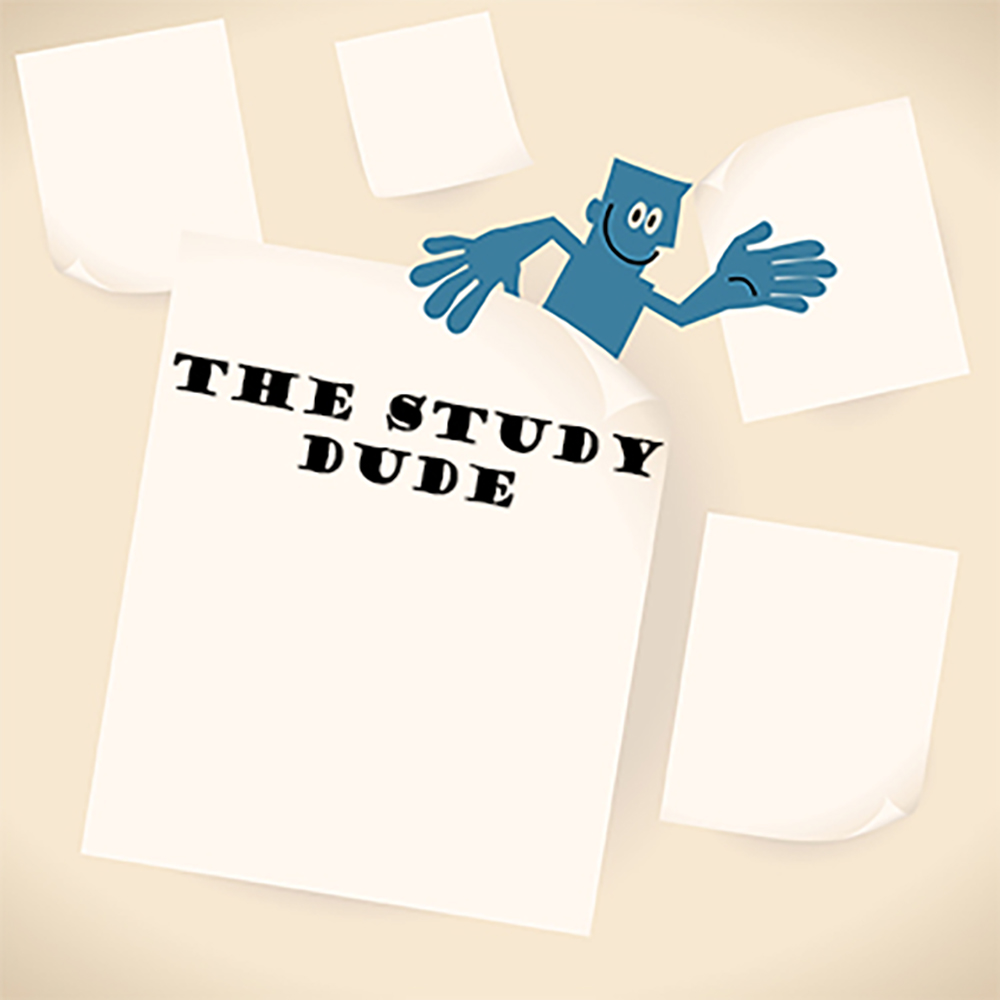 There is nothing more that The Study Dude wants for you than to say something more than, “Well, I… well I don’t know” when someone asks you what your thesis was about.
There is nothing more that The Study Dude wants for you than to say something more than, “Well, I… well I don’t know” when someone asks you what your thesis was about.
Well, in these articles, as The Study Dude, I’ll try to give you the study tips you need to help make your learning easier. I’ll also give you straight and honest opinions and personal anecdotes?even the embarrassing ones that you wouldn’t ever dare read about from any other study tip guru.
This week’s Study Dude article starts with part two of Demystifying Dissertation Writing by Peg Boyle Single, Ph.D. If you ever wanted to learn how to write a dissertation or book from scratch?and you want to streamline it as much as possible?Peg will shower you with tips and tools for being anything but All But Dissertation.
So, there’s nothing to fear. The Study Dude is determined to make right for you all the wrongs I made in grad school?one A+ at a time.
How to Read Interactively
When I read an article, I like to highlight sections galore. I like to make yellow snakes aligned horizontally, capturing every single point that interests me and that might fit into the topic of my thesis. No text that seems to scream “Let me captivate you!” goes without highlight.
In the margins beside each yellow snake, I put one or two keywords that encapsulate the gist of the message. Once I’ve finished highlighting and placing keywords beside each highlighted piece of quotable material, I make up headings for an outline based on the most prominent keywords.
Then, I go into the papers I’ve highlighted and type up each margin heading into a Microsoft Word outline program. From there, I’ll add the quotes under their respective headings, later grouping them in a more calculated manner. If some of the sections of the outline seem to have too little material, I continue researching in that area, as Peg Boyle Single also suggests you do in her long outline system.
In next week’s Study Dude article, I’ll reveal to you a much better system for organizing that initial outline, but for now, I’ll just let you know that Peg Boyle Single doesn’t recommend highlighting reading notes. She thinks we can quite easily take highlighting to extremes. She recommends using an erasable pencil and a software package like Endnote.
Her system is different. Peg Boyle Single crafted the following advice on how to read interactively:
– Underline with a pencil important or potentially citable parts in your reading.
– Jot down notes in the margins of your readings.
– Avoid using a highlighter. It promotes your pages ending up as a sea of yellow.
– Get an overview. Start your reading venture by reading the Table of Contents. Work your way down into the intro and then, if you don’t have a TOC, say for an article, look at the headings and subheadings. Also, peer at the references for the book or article.
– Finish reading the article, book, or chapter before venturing on to take notes. Okay, okay! If you don’t want to wait until you finish the reading, then go ahead and take notes during the reading. This is not recommended, though.
– Try to glean what the main point is, what evidence leads to a convincing conclusion, what object or person or source the article studies, what theory or methods were used, and how the article or book helps advance your personal- or career-related interests.
– In the book or article, put three stars by the main point, and write H#1 for hypothesis number one and H#2 for hypothesis number two and so on.
– On the front cover, use sticky notes to indicate page numbers of main elements, such as the hypothesis, the theory, or anything else of importance.
– Read dissertations from your own department and notice how method, theory, and key ideas are presented.
Take Notes for Citation Purposes
Taking notes for citations includes a plethora of judgement calls, like what to include, what to paraphrase, and what evidence will best make your point.
After the loads of reading you will undertake in the research process, you will need to be able to discern what to include and what to omit. These inclusions comprise your citeable notes. What then happens with these citeable notes in Peg Boyle’s system will surely streamline the essay writing process.
While I was in graduate studies, I heard about the latest innovation: Endnote. Some of the students tried it on for size, but I received the advice to go the old-fashioned route for collecting citations: cue cards and the good old computer keypad. While this advice may have made me more diligent with learning proper citation formats, I think I missed out on learning an invaluable software package that could have fast tracked my research endeavour.
Peg Boyle has much advice on how gather interactive and citeable notes and how to implement Endnote into your research ambition:
– Endnote, Reference Manager, or any other reference software will help guide your research activities.
– For your interactive notes on an article, try to capture the key idea, the hypothesis, the evidence and arguments, the theories, the methods, the results, all the quotes you wish to capture, why it matters, and how the material is significant to your own research.
– Record the bibliographic reference and who to contact for copyright permissions.
– Always ensure you capture the page number.
– Take copious and lengthy notes from primary sources, such as interviews, objects of study, diaries, or anything that serves as the original material or the focal point of what you are analyzing.
– Cite generously.
– When you add citeable notes to your outline, these enable you to see where you are weak in quantity and quality of citations and where you are strong. This should help you determine what areas you need to research further and which you can stop researching further.
– Citeable notes contain the point of the quote and some words from the quote itself.
– Group citeable notes by theme
– Organize each theme logically, chronologically, etcetera, giving it a coherent order and structure.
Devise a Statement of Focus
A statement of focus is not unlike a thesis statement, but might contain a little more information about your methodology and theory and so forth.
Unwisely, I never came up with a focus statement nor an elevator pitch for what my thesis entailed. If, at the outset, I had come up with a strong focus statement, or at least an elevator pitch, my thesis would have strengthened noticeably.
Later on, after the thesis, I applied for a career opportunity. The interviewer probed, “Tell me about your thesis.” I hemmed and hawed and tried to insert my best, unpolished pitch. She facetiously responded, “Were you results good or bad?” I never got the job. The moral of the story: at least get an elevator pitch, if not a whole focus statement for your thesis, because you’ll end up needing it throughout your life.
Peg Boyle Single gives advice on producing a focus statement:
– A clear focus statement can almost guarantee success with your dissertation writing.
– Ensure that your focus statement aligns with your professional aims.
– A focus statement consists of only a few sentences.
– Your focus statement relies on the major groups or themes of citeable notes you took previously.
– You will be revising your focus statement throughout the dissertation process, so don’t worry about whether it is perfect or not at the outset.
– Make focus statement crystal clear.
– A focus statement should include a research question, the object studies, the theory and methodology uses, and the time frame.
– Ask yourself why you are researching this topic to help glean how to draft your focus statement. Also ask what the key idea is, why the research matters, what three major points you want to convey, and what objects or data you need to investigate.
– Journal while coming up with a focus statement.
– Discuss focus statement with anyone and everyone.
References
Single, Peg Boyle. 2010. Demystifying Dissertation Writing. Stirling, Virginia: Stylus Publishing.
